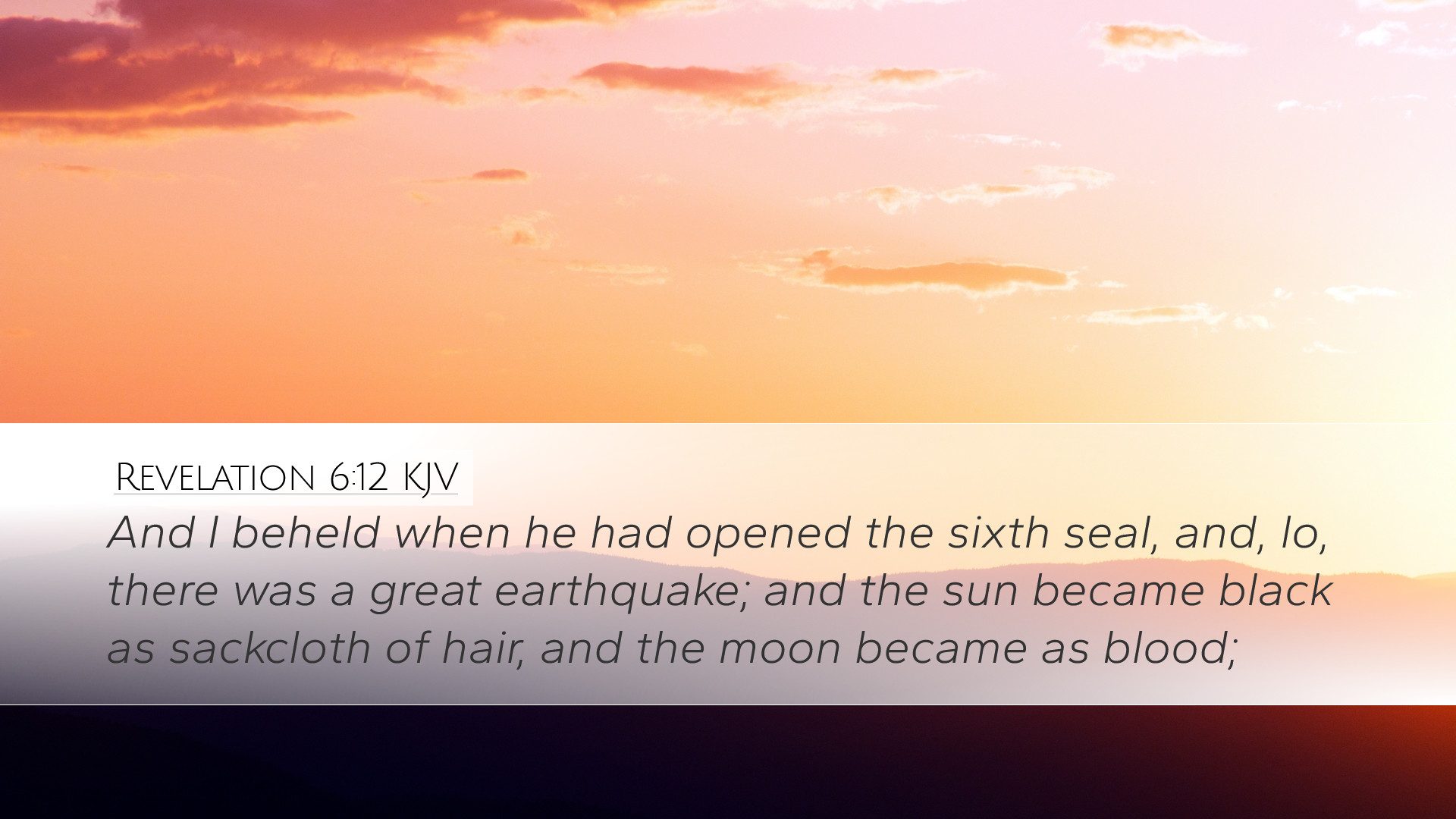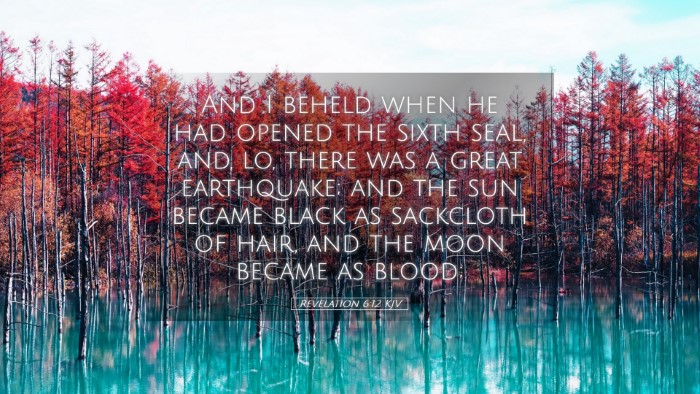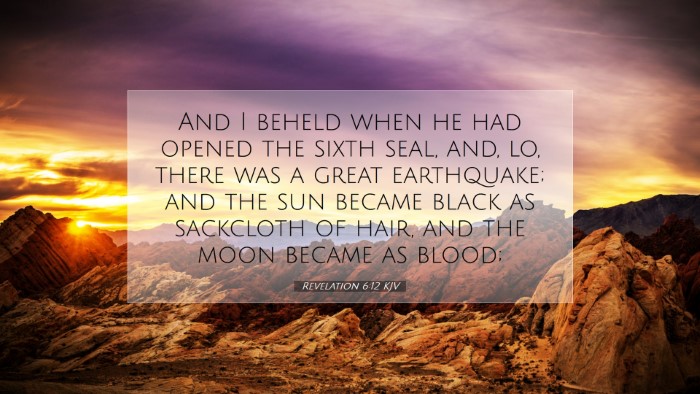Commentary on Revelation 6:12
Verse: Revelation 6:12 (KJV)
"And I beheld when he had opened the sixth seal, and lo, there was a great earthquake; and the sun became black as sackcloth of hair, and the moon became as blood."
Context and Overview
This verse falls within the apocalyptic framework of the Book of Revelation, attributed to the apostle John, where the unfolding of divine judgment and the ultimate victory of Christ are revealed. The opening of the sixth seal signifies a significant escalation in the cosmic upheaval that accompanies God's judgment.
Commentators such as Matthew Henry highlight the dramatic imagery used in this verse as reflecting both literal and symbolic meanings. Each element—the earthquake, the darkened sun, and the blood-like moon—serves to illustrate God’s power and the seriousness of the impending judgments.
Insights from Public Domain Commentaries
1. Matthew Henry’s Commentary
Henry emphasizes the fearsome nature of the events associated with the opening of the sixth seal. He points out that the earthquake signifies a shake-up of the natural order, possibly indicating societal upheaval as well.
- Great Earthquake: This symbolizes not just physical tremors but spiritual and moral disturbances affecting humanity.
- Sun Becoming Black: The sun's darkening illustrates the withdrawal of light and hope, often seen as a harbinger of divine judgment upon the earth.
- Moon as Blood: This image conveys a sense of foreboding and alarm, typical of prophetic literature that warns of perilous times.
2. Albert Barnes' Notes
Barnes presents a more theological view, focusing on the implications of God's sovereignty over nature. He interprets the calamities as signs of the end times, significant for both the early Christian community and modern believers.
- Symbolism of Celestial Bodies: The phenomena involving the sun and moon may represent the fall of worldly powers and authorities, collapsing under God's judgment.
- Calls to Repentance: Barnes argues that such cataclysmic disruptions serve as divine calls for humanity to repent and turn back to God.
3. Adam Clarke’s Commentary
Clarke offers a detailed exegesis, examining each element of the verse in the light of historical contexts. He suggests that the cosmic disturbances symbolize the upheaval of societal norms and the imminent return of Christ.
- Historical Context: Clarke posits that these events may foreshadow historical calamities experienced by the early Church, including persecution and societal collapse.
- Spiritual Interpretation: He urges readers to consider the implications for personal faith; the trembling of the earth is a metaphor for the shaken faith of the believer in turbulent times.
Theological Implications
The interplay of judgment and mercy is profound throughout Revelation, and this verse encapsulates a critical juncture in that theme. The chaotic imagery not only signifies God's judgment on sin but also serves a redemptive purpose, as it calls believers to vigilance and righteousness.
In the light of this verse, pastors and theologians are reminded of the urgency of their message—proclaiming both the impending judgment and the hope of salvation through Christ. The depiction of cosmic disturbances encourages an understanding of God’s transcendent authority over creation, which should lead the faithful to deep reverence and willingness for repentance.
Application for Today's Believer
Understanding Revelation 6:12 is pivotal for modern believers as it provides both a cautionary warning and a source of hope. In a world rife with chaos and uncertainty, the imagery in this verse serves as both reassurance of God’s control and a reminder of the fragility of human existence.
- Personal Reflection: Believers are encouraged to consider how they respond to the tempestuous nature of life. Are they anchored in faith, or are they swayed by fear?
- Community Impact: The Church is called to embody hope and stability in a precarious world, actively engaging in the mission to spread the gospel amidst turbulence.
- Expectation of Christ's Return: The passage prompts believers to live in anticipation of Christ's return, fostering a lifestyle of readiness and active faith.
Conclusion
Revelation 6:12 serves as a vivid reminder of the reality of divine judgment and the observable signs that herald its approach. The synthesis of insights from Matthew Henry, Albert Barnes, and Adam Clarke illustrates the timeless relevance of this scripture for pastors, students, theologians, and scholars alike. It beckons them to delve deeper into the mysteries of faith, divine sovereignty, and human response in the face of eschatological truths. As we reflect on this verse, may we be ever aware of God's majesty, justice, and the calls to holiness it presents.


